Sikhism - Sikh Gurus
The term guru comes from the Sanskrit gurū, meaning teacher, guide or mentor. The traditions and philosophy of Sikhism were established by ten specific gurus from 1469 to 1708. Each guru added to and reinforced the message taught by the previous, resulting in the creation of the Sikh religion. Guru Nanak Dev was the first guru and appointed a disciple as successor. Guru Gobind Singh was the final guru in human form. Before his death, Gobind Singh decreed that the Gurū Granth Sāhib would be the final and perpetual guru of the Sikhs. The ten Gurus are -
- Guru Nanak Dev (1469-1539). The founder of Sikhism.
- Guru Angad Dev (1504-52). Developed Gurmukhi, the script used for the Punjab language and composed 62 hymns that were later included in the Guru Granth Sahib.
- Guru Amar Das (1479-1574). Became Guru at the age of 73. Organized three annual gatherings for Sikhs, set up the first pilgrimage site at Goindval Sahib and introduced Sikh rituals for birth and death. His most famous hymn, Anand Sahib, is part of Sikh daily ritual.
- Guru Ram Das (1534-1581). Founded Amritsar, the holy city of Sikhism. His followers dug the pool that became the holy lake surrounding the Golden Temple. Composed the Lavan marriage hymn, still used in Sikh marriages.
- Guru Arjan Dev (1563-1606). Collected the hymns of previous Gurus and added 2616 of his own to form the Guru Granth Sahib, the holy book of Sikhism. He also built the Golden Temple.
- Guru Hargobind (1595-1644). The son of Guru Arjan. Proclaimed that the Guru is a military leader as well as spiritual leader, leading to conflict with the Mughal emperor Shah Jahan.
- Guru Har Rai (1630-1661). Grandson of Guru Hargobind.
- Guru Har Krishan (1656-1664). Younger son of Guru Har Rai. Became guru at the age of 5 and died of smallpox at the age of 8. He is the only Guru depicted in art without a beard.
- Guru Tegh Bahadur (1621-75). Great-uncle of Guru Har Krishan. Was barred from Amritsar by Sikh rivals, so founded the Sikh center of Anandpur. Was beheaded in Delhi by Muslims for helping Brahmins avoid forcible conversion to Islam.
- Guru Gobind Singh (1666-1708). Son of Guru Tegh Bahadur. Second only to Guru Nanak in importance, he is often shown prominently next to Nanak in Sikh art. Resisted oppression by Muhgal and Hindu authorities, exemplifying the Sikh ideal of the heroic saint-soldier. Founded the Khalsa and Sikh baptism, composed many poems, and nominated the Sikh sacred text as the final and enduring Guru.
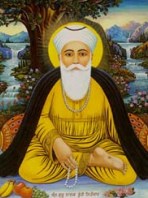 |
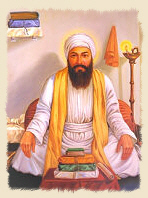 |
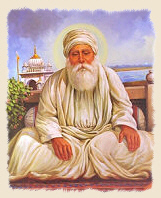 |
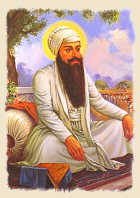 |
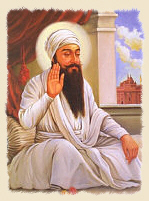 |
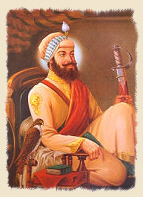 |
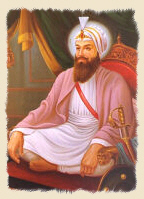 |
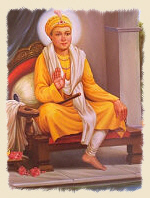 |
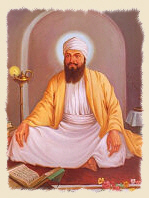 |
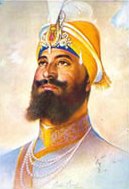 |